In Photos: Amazing Fly Eyes
Eye of the Fly
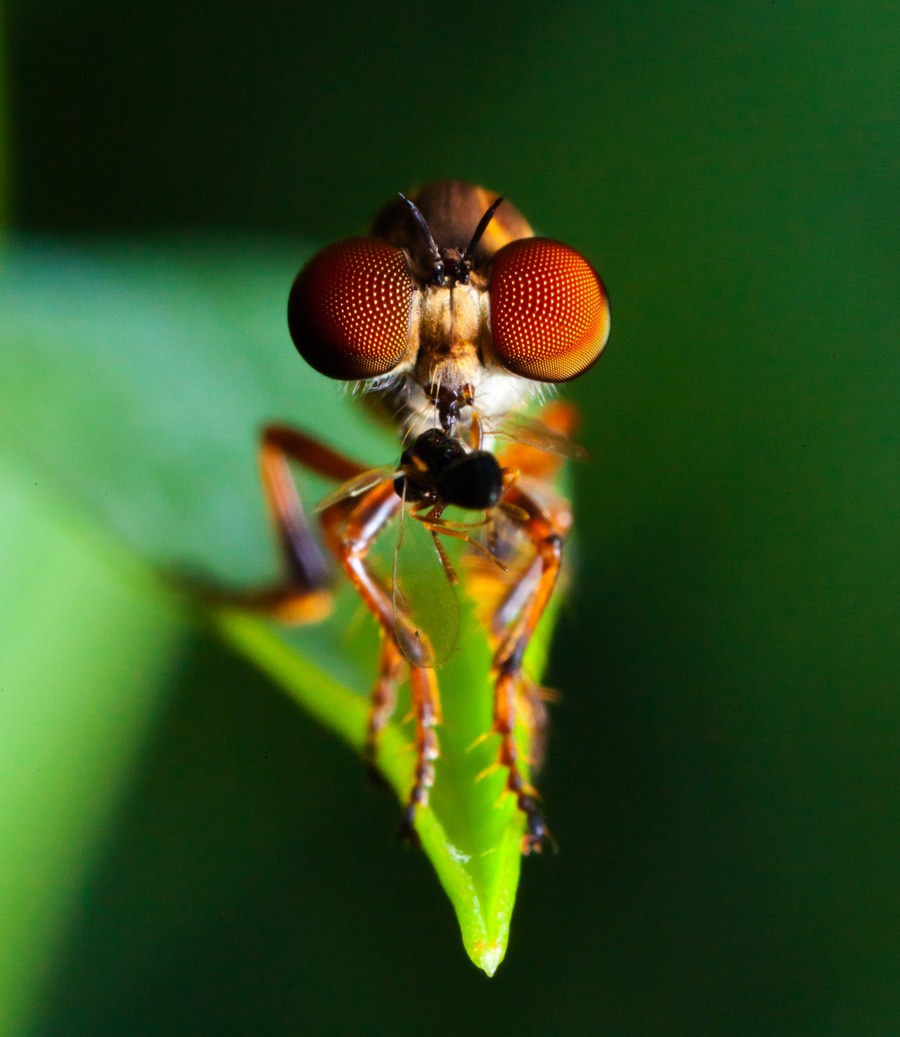
The tiny robber fly reaches about 6 millimeters in length, about the size of a grain of rice. But despite its small size, the fly boasts visual abilities that rival that of the dragonfly, which is 10 times larger and can carry bigger eyes.
[Read the full article on fly eyes]
A speedy predator
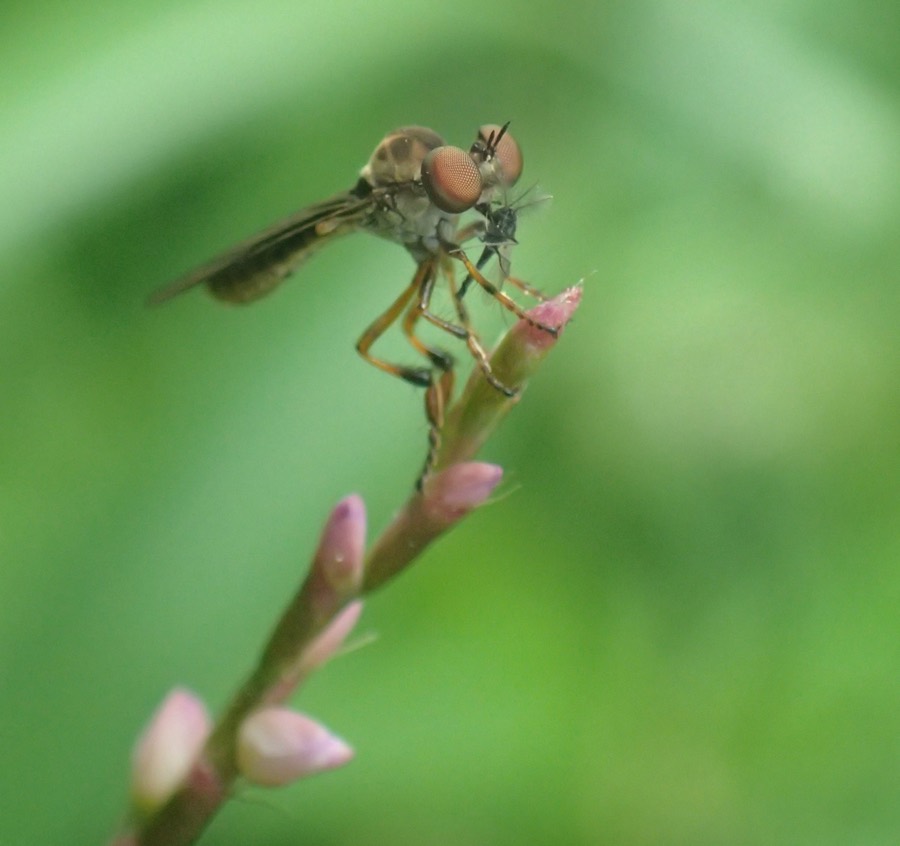
The robber fly, genus Holcocephala, perches on branches and launches itself at prey flying overhead. New research published March 9, 2017, in the journal Current Biology finds that these flies can see prey smaller than 2 millimeters up to 100 of their own body lengths away.
Wide Eyes
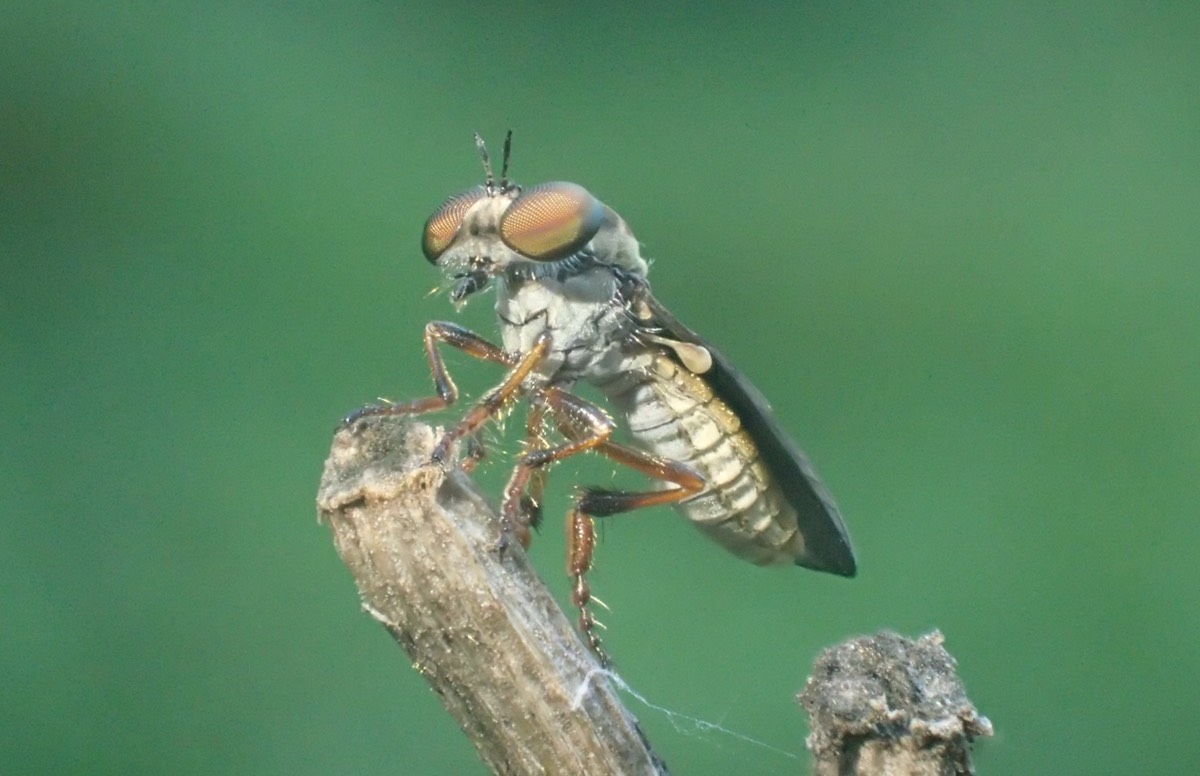
The compound eyes of the robber fly. These flies have a concentrated area of 78 micron-diameter lenses in the center of each eye, more than double the size of the lenses near the edges, which are just 20 microns across. These wide lenses allow more light in, which then focuses on unusually small light receptors that are set far back from the lens. The result is a sharp central area of vision.
Tasty meal

A robber fly perches with its prey after a successful hunt. Researchers strung silver beads on fishing wire to mimic prey and videotape flies in their rapid airborne attacks.
Fly Eyes
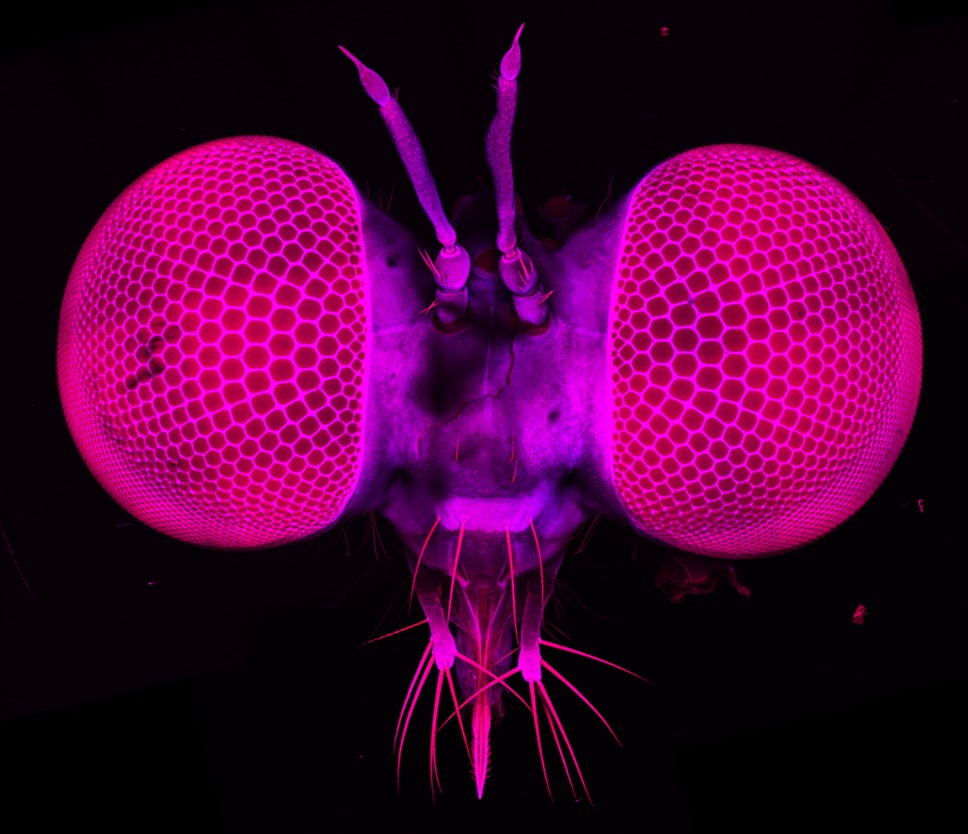
A transmission electron microscope image of Holcocephala showing the enlarged lenses toward the center of the eyes.
[Read the full article on fly eyes]
Get the world’s most fascinating discoveries delivered straight to your inbox.
Hopeful Mates

A female robber fly sits on a perch at midday as a male passes by. During the middle of the day, hopeful robber fly males often approach females hoping to mate.
Satiated Fly

A robber fly sits with an unfortunate prey insect. The flies probably inject their victims with a paralytic toxin and then with enzymes that dissolve the prey's tissues from the inside out.
Eye Sizes
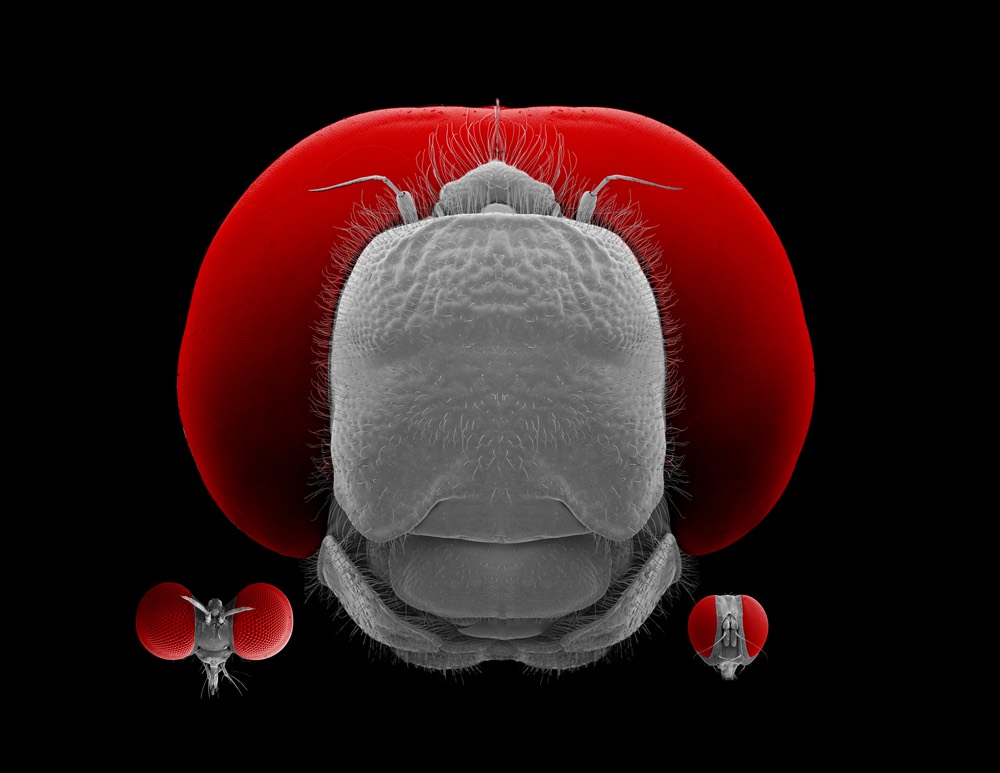
A comparison of the (false-colored) eyes of the robber fly (left), the dragonfly (center) and the killer fly (right). The dragonfly has the best vision of any known insect, but the robber fly has evolved to see nearly as sharply.
[Read the full article on fly eyes]
Shapely Eyes
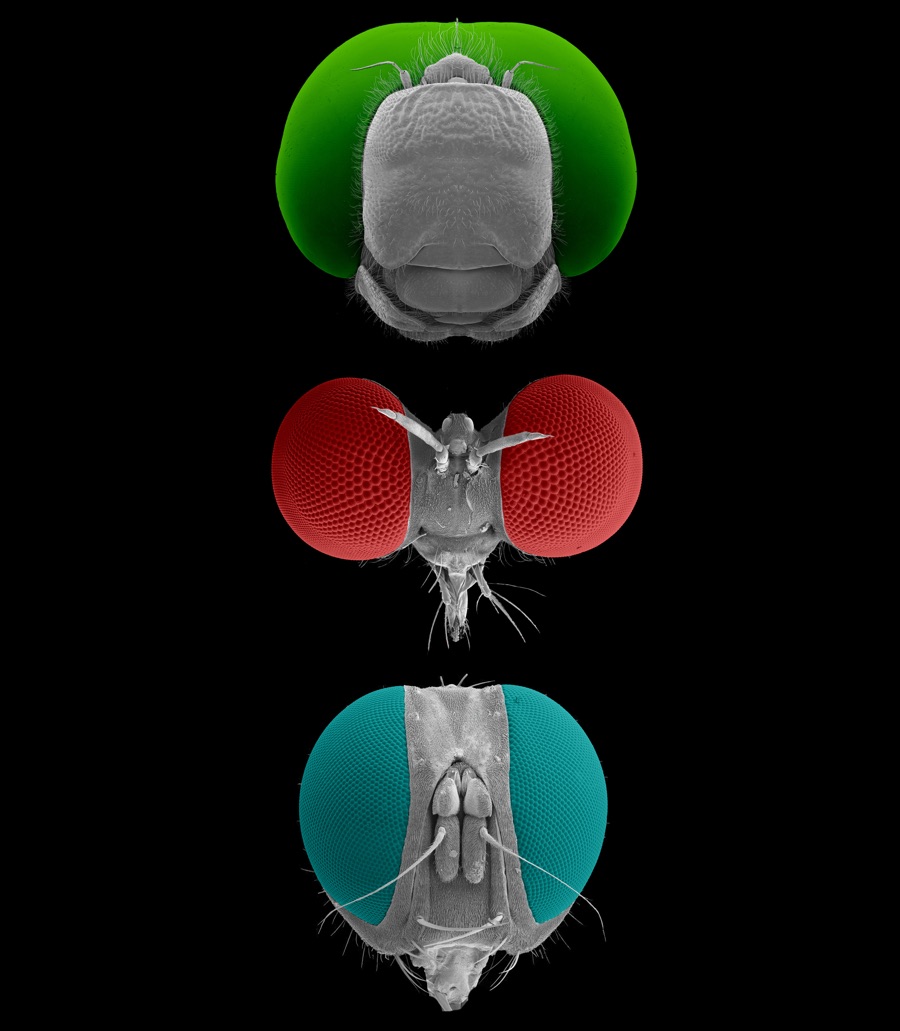
A comparison of the eye shapes of the dragonfly (top), robber fly (middle) and killer fly (bottom). The eyes are falsely colored and the head sizes are not to scale — in reality, the dragonfly dwarfs the other two species in size.
Eye Adaptations
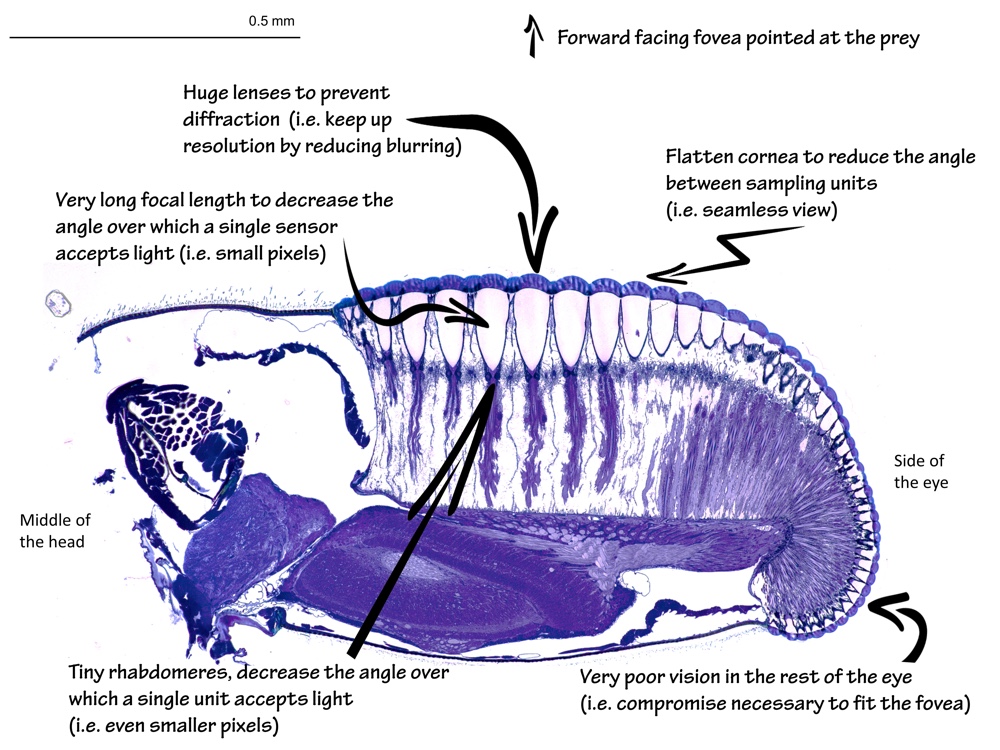
This slide shows one of the eyes of the robber fly Holcocephala, with annotations explaining the adaptations that make the fly's vision so sharp. A long focal length between the fly lenses and the light receptors deeper in the eye has the effect of "zooming in" and creating an area of high acuity in the fly's visual field. The fly's peripheral vision, on the other hand, is not as impressive.
Look Into My Eyes

A scanning electron microscope image of the eyes of the robber fly Holcocephala. These rice-grain-sized flies have excellent vision due to the large lenses clustered at the center of their compound eyes. They are also capable of split-second aerial attacks on prey, during which they constantly adjust their trajectory to ensure a collision course.

Stephanie Pappas is a contributing writer for Live Science, covering topics ranging from geoscience to archaeology to the human brain and behavior. She was previously a senior writer for Live Science but is now a freelancer based in Denver, Colorado, and regularly contributes to Scientific American and The Monitor, the monthly magazine of the American Psychological Association. Stephanie received a bachelor's degree in psychology from the University of South Carolina and a graduate certificate in science communication from the University of California, Santa Cruz.


